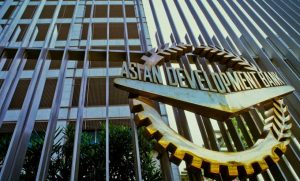 The Asian Development Bank (ADB) has lowered its forecast for India’s economic growth in fiscal year 2019-20 to 5.1%. ADB has stated that the consumption was affected by slow job growth and rural distress was aggravated by poor harvest. The Asian Development Bank (ADB) has lowered its forecast for India’s economic growth in fiscal year 2019-20 to 5.1%. ADB has stated that the consumption was affected by slow job growth and rural distress was aggravated by poor harvest. |
| Source: The Live Mint |
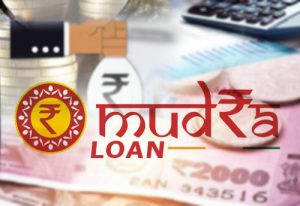 Union Government informed that loans worth over 10 lakh crore rupees have been sanctioned till 1st November this year under the Pradhan Mantri Mudra Yojana, PMMY. As per the findings of the PMMY survey, around five crore persons were working in the establishments for which MUDRA loans were availed between April 2015 to March 2018. The survey reveals that these loans enabled beneficiaries to sustain the economic activities they were engaged in. Union Government informed that loans worth over 10 lakh crore rupees have been sanctioned till 1st November this year under the Pradhan Mantri Mudra Yojana, PMMY. As per the findings of the PMMY survey, around five crore persons were working in the establishments for which MUDRA loans were availed between April 2015 to March 2018. The survey reveals that these loans enabled beneficiaries to sustain the economic activities they were engaged in. |
| Source: The News on AIR |
 National Stock Exchange launched interest rate options on ten-year Government bonds. The exchange recorded a turnover of 5,926 contracts on the first day of its launch. The exchange has added one more instrument to the fixed income derivatives asset class. interest rate options will provide institutional investors with the ability to manage risk through a non-linear product. These interest rate options are based on 10-year government bonds maturing in 2029 with a coupon rate of 7.26 per cent and 6.45 per cent. Presently, interest rate futures are available on seven government bonds for residual maturity ranging from 4 years to 15 years. National Stock Exchange launched interest rate options on ten-year Government bonds. The exchange recorded a turnover of 5,926 contracts on the first day of its launch. The exchange has added one more instrument to the fixed income derivatives asset class. interest rate options will provide institutional investors with the ability to manage risk through a non-linear product. These interest rate options are based on 10-year government bonds maturing in 2029 with a coupon rate of 7.26 per cent and 6.45 per cent. Presently, interest rate futures are available on seven government bonds for residual maturity ranging from 4 years to 15 years. |
| Source: The News on AIR |
 India’s Exim Bank (Export-Import Bank of India) has provided $500 million (Rs 3561 crore) Line of Credit(LoC) to Bangladesh for defence-related procurement in the neighbouring country. The Exim bank entered into an agreement with Bangladesh’s Armed Forces Division (AFD) in this regard on April 11, 2019. The agreement became effective from November 7, 2019, and the utilisation period of the loan is 10 years from the date of signing the agreement. Under the loan agreement, financing of export of eligible goods and services from India would be allowed subject to the Foreign Trade Policy(FTP). Out of total credit, 75% of the contract price will be applied by the seller and the remaining 25% will be procured by the seller for the purpose of the eligible contract from outside India, including Bangladesh. The contract price may be reduced from 75% to 65% based on the nature of procurement. India’s Exim Bank (Export-Import Bank of India) has provided $500 million (Rs 3561 crore) Line of Credit(LoC) to Bangladesh for defence-related procurement in the neighbouring country. The Exim bank entered into an agreement with Bangladesh’s Armed Forces Division (AFD) in this regard on April 11, 2019. The agreement became effective from November 7, 2019, and the utilisation period of the loan is 10 years from the date of signing the agreement. Under the loan agreement, financing of export of eligible goods and services from India would be allowed subject to the Foreign Trade Policy(FTP). Out of total credit, 75% of the contract price will be applied by the seller and the remaining 25% will be procured by the seller for the purpose of the eligible contract from outside India, including Bangladesh. The contract price may be reduced from 75% to 65% based on the nature of procurement. |
| Source: The Economic Times |
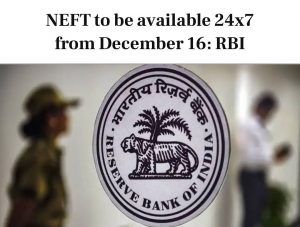 The Reserve Bank of India announced round-the-clock transactions will be allowed 24×7 facility under the National Electronic Funds Transfer (NEFT) system on all days including weekends and holidays from December 16. These transactions after the usual banking hours are set to be automated initiated using ‘Straight Through Processing (STP)’ modes by the banks. The existing discipline for crediting the beneficiary’s account or returning the transaction within 2 hours of settlement to the originating bank will also continue. Member banks are also advised to initiate necessary action and ensure availability of all necessary infrastructural requirements at their end for providing seamless NEFT 24×7 facility to their customers. The Reserve Bank of India announced round-the-clock transactions will be allowed 24×7 facility under the National Electronic Funds Transfer (NEFT) system on all days including weekends and holidays from December 16. These transactions after the usual banking hours are set to be automated initiated using ‘Straight Through Processing (STP)’ modes by the banks. The existing discipline for crediting the beneficiary’s account or returning the transaction within 2 hours of settlement to the originating bank will also continue. Member banks are also advised to initiate necessary action and ensure availability of all necessary infrastructural requirements at their end for providing seamless NEFT 24×7 facility to their customers. |
| Source: The News on AIR |
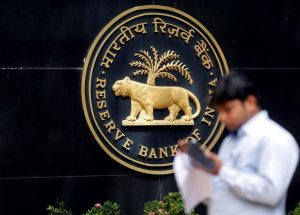 The Reserve Bank of India released guidelines for ‘on tap’ Licensing of Small Finance Banks in the Private Sector. Now payments banks willing to convert themselves into small finance banks (SFBs) can apply for such a licence only after 5 years of operations. Existing payments banks (PBs), which are controlled by residents and have completed five years of operations, are also eligible for conversion into small finance banks after complying with all legal and regulatory requirements of various authorities and if they conform to these guidelines. The licensing window will be open on-tap. The minimum capital for setting up an SFB has been mandated at Rs. 200 crores, adding for primary (urban) co-operative banks (UCBs), which wish to become SFBs, the initial requirement of net worth will be Rs. 100 crores, which will have to be increased to Rs. 200 crores within five years from the date of commencement of business. SFBs will be given scheduled bank status immediately upon commencement of operations. The Reserve Bank of India released guidelines for ‘on tap’ Licensing of Small Finance Banks in the Private Sector. Now payments banks willing to convert themselves into small finance banks (SFBs) can apply for such a licence only after 5 years of operations. Existing payments banks (PBs), which are controlled by residents and have completed five years of operations, are also eligible for conversion into small finance banks after complying with all legal and regulatory requirements of various authorities and if they conform to these guidelines. The licensing window will be open on-tap. The minimum capital for setting up an SFB has been mandated at Rs. 200 crores, adding for primary (urban) co-operative banks (UCBs), which wish to become SFBs, the initial requirement of net worth will be Rs. 100 crores, which will have to be increased to Rs. 200 crores within five years from the date of commencement of business. SFBs will be given scheduled bank status immediately upon commencement of operations. |
| Source: The Reserve Bank of India |
 The country’s foreign exchange reserves crossed the $450-billion mark for the first time ever on the back of strong inflows which enabled the central bank to buy dollars from the market, thus checking any sharp appreciation of the rupee. India’s foreign exchange reserves were at $451.7 billion on December 3, 2019, an increase of $38.8 billion over end-March 2019. The Reserve Bank has always maintained that it intervenes in the foreign exchange market to curb volatility and does not target a particular level of the exchange rate. The country’s foreign exchange reserves crossed the $450-billion mark for the first time ever on the back of strong inflows which enabled the central bank to buy dollars from the market, thus checking any sharp appreciation of the rupee. India’s foreign exchange reserves were at $451.7 billion on December 3, 2019, an increase of $38.8 billion over end-March 2019. The Reserve Bank has always maintained that it intervenes in the foreign exchange market to curb volatility and does not target a particular level of the exchange rate. |
| Source: The Hindu |
 India’s GDP growth hit an over six-year low of 4.5 percent in July-September 2019, dragged mainly by the deceleration in manufacturing output and subdued farm sector activity. The Gross Domestic Product (GDP) growth was recorded at 7 percent in the corresponding quarter of FY 2018-19. In the previous quarter of the ongoing fiscal, economic growth was 5 percent. This GDP growth data for the September 2019 quarter is the lowest since January-March of 2012-13 when it was registered at 4.3 percent. India’s GDP growth hit an over six-year low of 4.5 percent in July-September 2019, dragged mainly by the deceleration in manufacturing output and subdued farm sector activity. The Gross Domestic Product (GDP) growth was recorded at 7 percent in the corresponding quarter of FY 2018-19. In the previous quarter of the ongoing fiscal, economic growth was 5 percent. This GDP growth data for the September 2019 quarter is the lowest since January-March of 2012-13 when it was registered at 4.3 percent. |
| Source- The Asian Page |
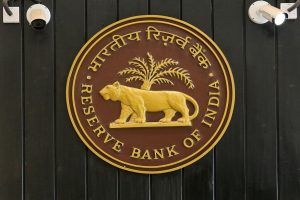 The Reserve Bank of India (RBI) has imposed a monetary penalty of Rs. 1.50 crore on Corporation Bank for non-compliance with certain provisions of directions issued by RBI. The penalty has been imposed in the exercise of powers vested in the RBI under the provisions of Section 47 A (1) (c) read with Section 46 (4) (i) and 51 (1) of the Banking Regulation Act, 1949. This action is based on the deficiencies in regulatory compliance and is not intended to pronounce upon the validity of any transaction or agreement entered into by the bank with its customers. The Reserve Bank of India (RBI) has imposed a monetary penalty of Rs. 1.50 crore on Corporation Bank for non-compliance with certain provisions of directions issued by RBI. The penalty has been imposed in the exercise of powers vested in the RBI under the provisions of Section 47 A (1) (c) read with Section 46 (4) (i) and 51 (1) of the Banking Regulation Act, 1949. This action is based on the deficiencies in regulatory compliance and is not intended to pronounce upon the validity of any transaction or agreement entered into by the bank with its customers. |
| Source- The Hindu Business Line |
 Global rating agency Moody’s expects the Centre’s fiscal deficit to touch 3.7% of the GDP. The Centre has targeted to keep the deficit at 3.3 per cent for the current fiscal (2019-20), but it has already reached 92.6 per cent of the Budget estimate in first six months of the current fiscal. For all the state governments, the fiscal deficit estimated to be around 3 %. A fiscal deficit is a shortfall in a government’s income compared with its spending. It is calculated as a percentage of GDP, or simply as total dollars spent in excess of income. Global rating agency Moody’s expects the Centre’s fiscal deficit to touch 3.7% of the GDP. The Centre has targeted to keep the deficit at 3.3 per cent for the current fiscal (2019-20), but it has already reached 92.6 per cent of the Budget estimate in first six months of the current fiscal. For all the state governments, the fiscal deficit estimated to be around 3 %. A fiscal deficit is a shortfall in a government’s income compared with its spending. It is calculated as a percentage of GDP, or simply as total dollars spent in excess of income. |
| Source: The Hindu |
You need to login to perform this action.
You will be redirected in
3 sec
